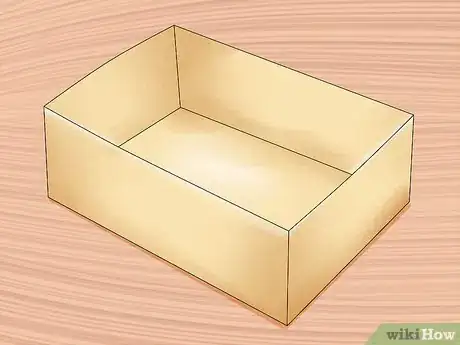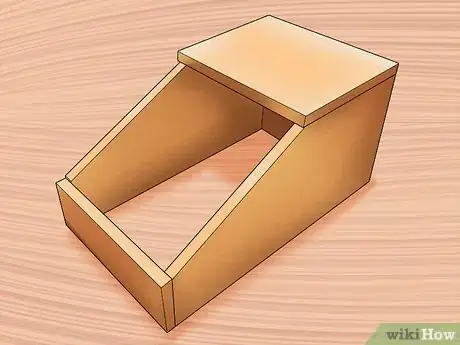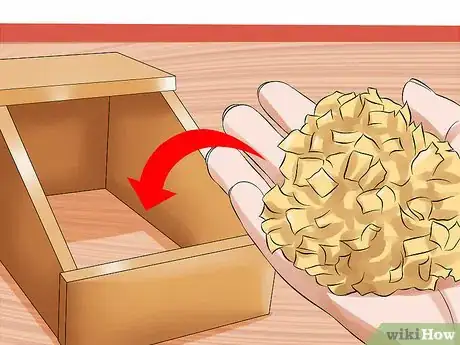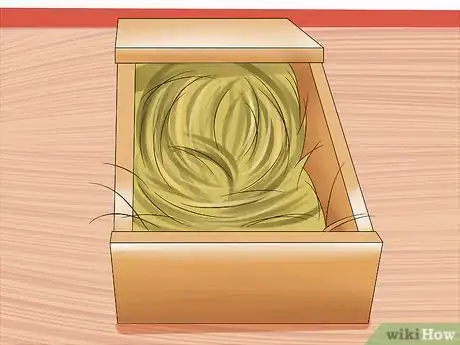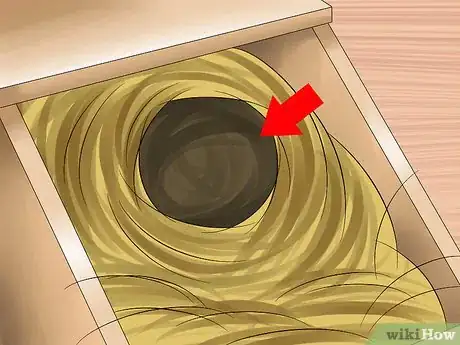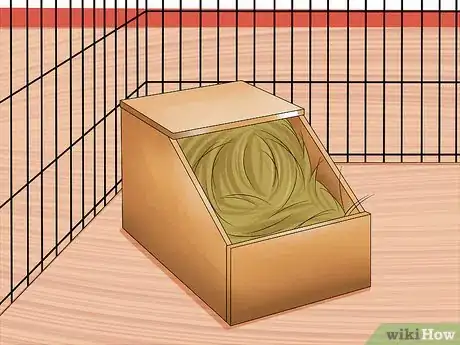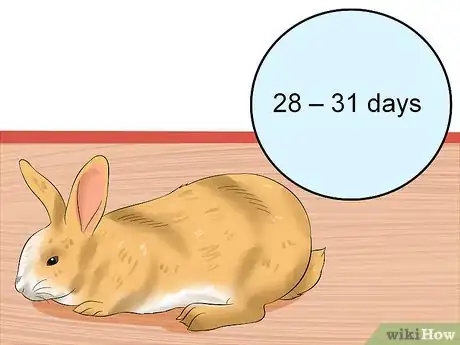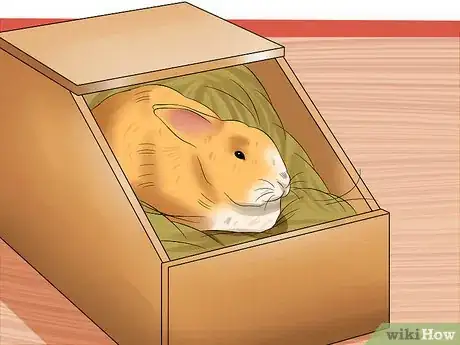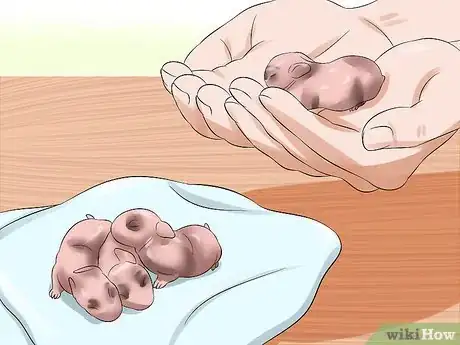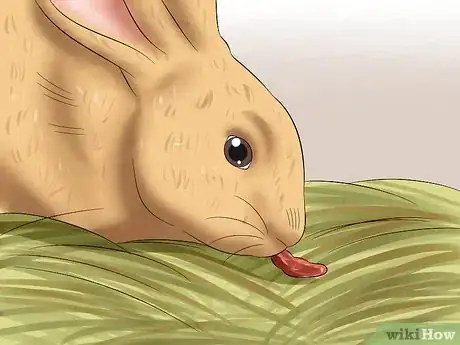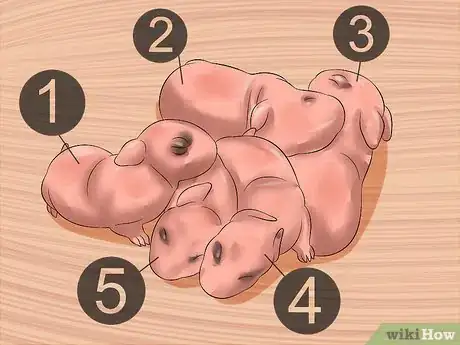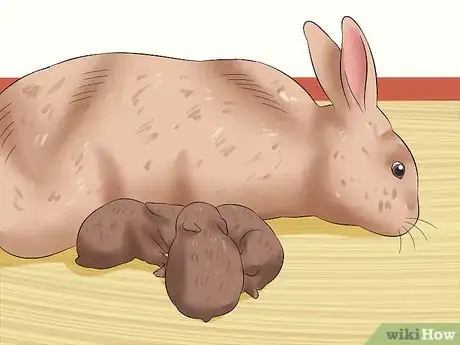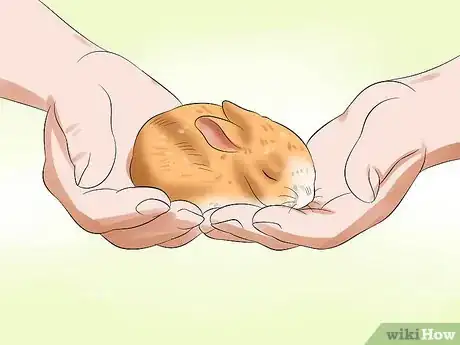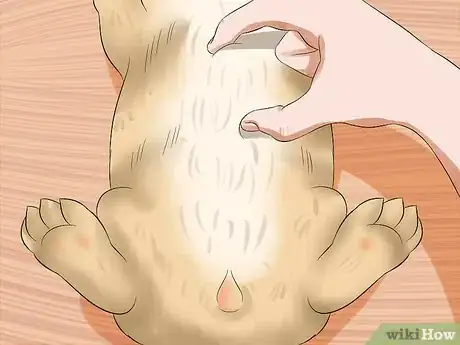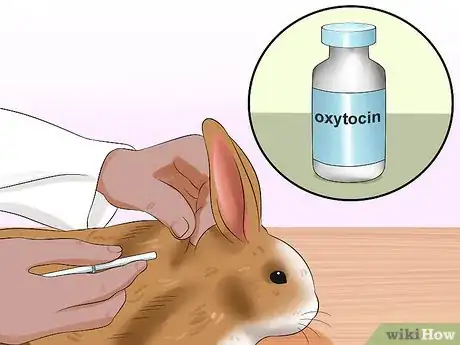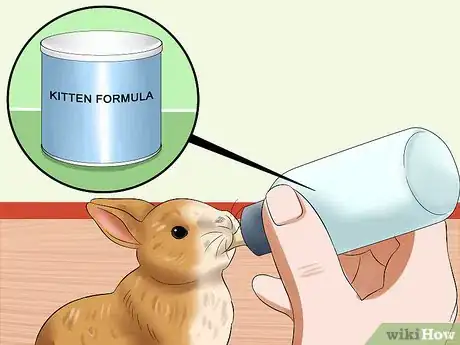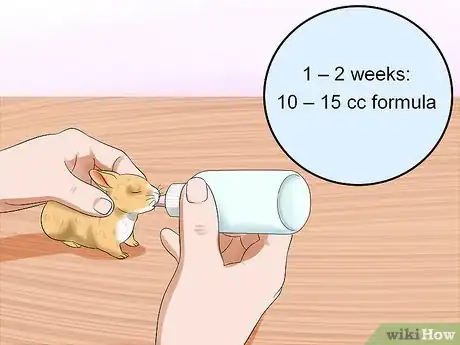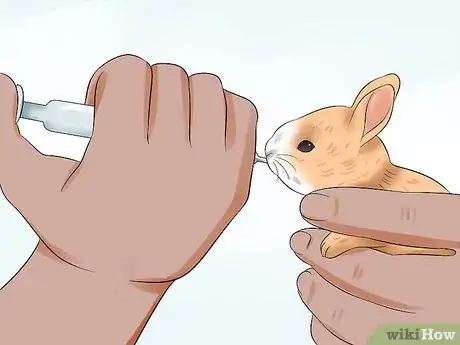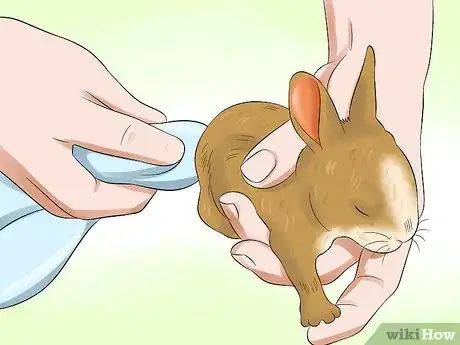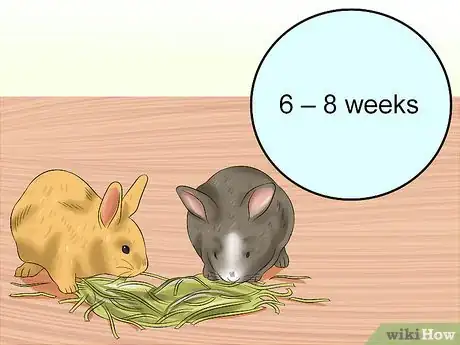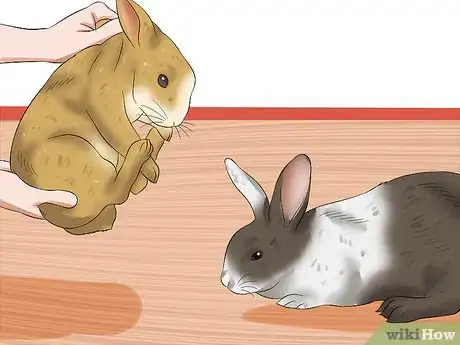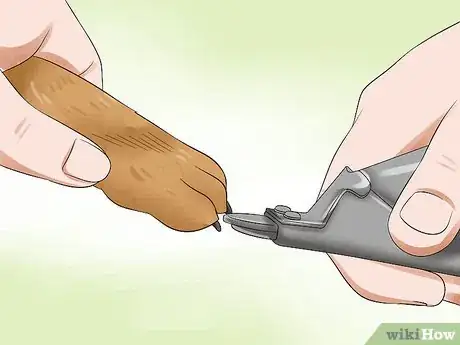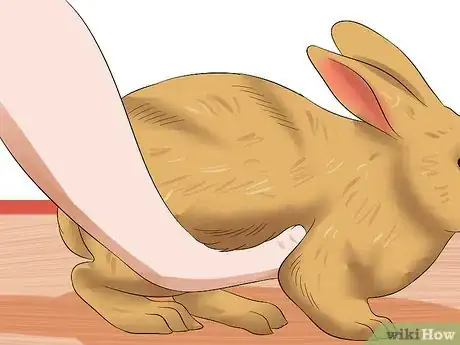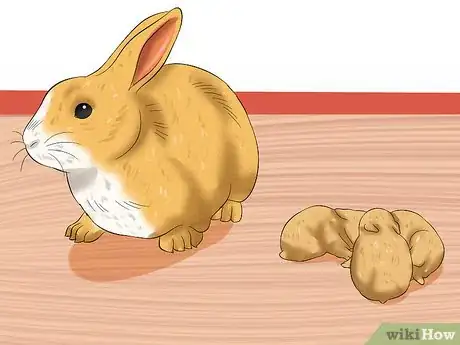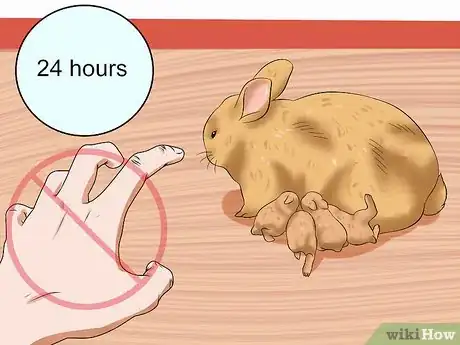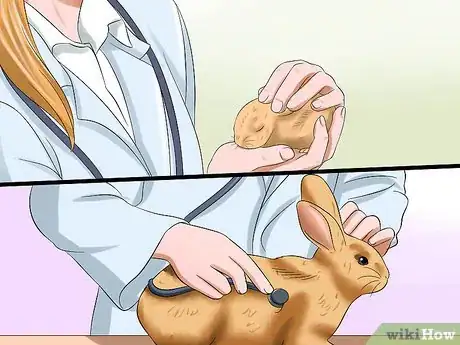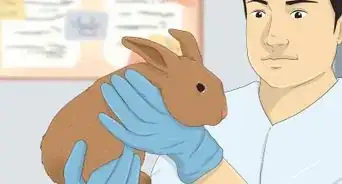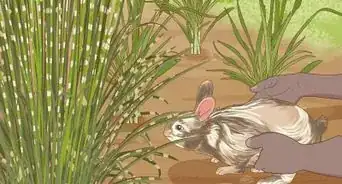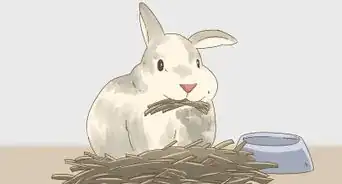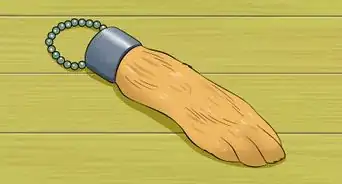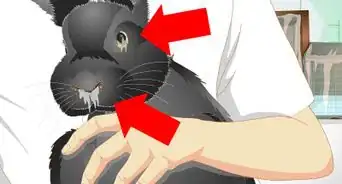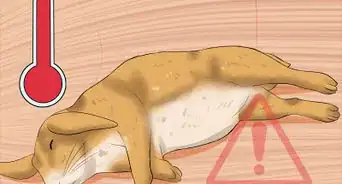This article was co-authored by Pippa Elliott, MRCVS. Dr. Elliott, BVMS, MRCVS is a veterinarian with over 30 years of experience in veterinary surgery and companion animal practice. She graduated from the University of Glasgow in 1987 with a degree in veterinary medicine and surgery. She has worked at the same animal clinic in her hometown for over 20 years.
There are 9 references cited in this article, which can be found at the bottom of the page.
wikiHow marks an article as reader-approved once it receives enough positive feedback. This article received 14 testimonials and 91% of readers who voted found it helpful, earning it our reader-approved status.
This article has been viewed 50,697 times.
Baby bunnies are very cute pets, especially when they are newborn. While sometimes having baby bunnies may be intentional, it can often be a surprise, especially if you have two rabbits where you were uncertain of their sex. In order to best prepare for baby bunnies, it’s important to provide a nest box for your baby bunnies, observe them after birth, [Nurse a Baby Rabbit|feed the baby bunnies]], and protect them from harm. Caring for baby bunnies can be challenging, but it can be great to see them grow up to healthy adults.
Steps
Providing a Nest Box for Your Baby Bunnies
-
1Get a nest box for your pregnant doe. Your doe will need a nest box 28 days after mating to begin nesting in preparation for the baby bunnies. You can use a variety of materials, including a shoebox for the doe to use for the nest.[1]
-
2Buy a commercial nest box if you’re using a wire cage. You can get a metal, wood, or wire box to provide your doe with her nest box. Wood or wire may be better in colder climates, whereas metal may be a good option in warmer climates.
- Your nest box should be relatively close the the following dimensions: 18 inches (45.7 cm) long X 10 inches (25.4 cm) wide X 6–10 inches (15.2–25.4 cm) tall.
- Clean your nest box thoroughly after purchasing. Try a 1:10 bleach to water ratio for an easy cleaner. If you do use bleach, but make sure all germs and cleaner have been removed before giving it to your pregnant.
Advertisement -
3Provide 1-2 inches of pine or cedar shavings for the bottom of the nest box. Your pregnant doe will need some cushioning whether you buy or make their nest box. Less shavings are better in the summer, whereas more should be used in the winter. Make sure to measure your shavings quantity with either a tape measure or using your finger up to the second knuckle.
- If you use cedar shavings, they should be kiln-dried, which makes sure that the resins in cedar have been neutralized and will not be harmful to your doe or baby bunnies.
-
4Use straw to fill in the rest of the nest box. This will help keep the baby bunnies warm once they are born. Additionally, the doe will likely chew or eat some of it as well.
- When you are filling the nest box with straw, pack it loosely so there will be space for the doe to burrow space for her babies.
- At the top of the nest box, try some field hay or timothy hay. This hay is more delicate and can help your doe's digestion.[2]
-
5Create a small burrow at the top of the nest box. This burrow will tip your pregnant doe off that this is a nesting box. Additionally, it may make it easier for them to burrow a place for their baby bunnies.
- The burrow can be made with your fist and needs only to be about the size of your hand. It gives the doe the starting point for creating their own larger burrow.
-
6Put the nest box in the doe’s cage. You’ll need to check on the baby bunnies regularly, so make sure the nest box is easy for you to get to. Give the doe time to get used to the nest box, since they may not know what to make of it at first. Eventually, the doe will make its way to the nest box.
Observing Baby Bunnies After Birth
-
1Watch your pregnant doe during her pregnancy. They are usually pregnant between 28-31 days. If the pregnancy last longer than 33 days, take her to a vet, since there may be a problem with her pregnancy or the baby bunnies.[3]
-
2Look for the signs of birth. Your doe will have mixed her own fur in with the material in the nest box. If you see some movement under the fur, your doe has likely given birth.
-
3Remove any stillborn baby bunnies. They may begin rotting after a few days, so it’s important to get them out quickly. Additionally, your doe may cannibalize the stillborn babies if you do not remove them.
-
4Leave any placentas in the nest box alone. Your doe will eat the placentas, since they supply your doe with hormones necessary to feed her babies.[4]
- If placentas are left alone by your doe, then remove them. This means she will not eat them, especially if she has already started nursing.
-
5Count the number of baby bunnies. Rabbits can have anywhere from 1-15 babies. Not all of them will survive, especially some that have a harder time feeding. If some of them do, you can take them out of the cage and attempt to supplement their diet yourself.
- Only touch any baby bunnies that you think are in danger of not getting enough to eat. Does may eat their young if they think baby bunnies are in danger from predators, including you.
-
6Let the doe feed her baby bunnies. Does will nurse their baby bunnies about one or twice a day. Unless there is a problem, this should provide the baby bunnies with enough food.[5]
-
7Look at the health of the baby bunnies. Baby bunnies that are getting fed have warm, plump bellies that are slightly distended. If your baby bunny looks malnourished, you may have to feed them yourself or bring them to the vet.
- Malnourished baby bunnies have sunken stomachs, are wrinkled from dehydration, and are generally weak.
- Baby bunnies need to be warm to process their food. Make sure they are protected in the nesting box and are warm enough.
-
8Examine the doe for signs of lactation. If many of the baby bunnies are malnourished, there may be a problem with the doe’s lactation. You can look at her nipples, which should be slightly swollen. Additionally, most of the fur will be removed near the teats to provide space for the babies to nurse. A small amount of pressure near the teats should produce milk from the doe.
-
9Bring the the doe to the vet immediately if there are problems with lactation. Your vet can give the doe oxytocin to help stimulate milk production. However, after 48 hours, the oxytocin will no longer be effective.[6]
- Does will occasionally not feed their babies until late on the first day. If the problem extends into the second day, it may be time to bring them into the vet.
Feeding the Baby Bunnies
-
1Feed malnourished baby bunnies. You can give them Kitten Milk Replacer (KMR) or goat milk. Rabbit milk is very high in calories, so it’s important to get a good replacement.[7]
- Add in one tablespoon of 100% heavy whipping cream without sugar to increase the fat content of the milk.
-
2Increase their formula amount a little per week. Baby bunnies should be fed twice per day.They should be weaned at 6-8 weeks, but will need to be fed exponentially more each week. The following amounts should be a good guideline:
- Newborn to 1 week: 4-5 cc formula
- 1-2 weeks: 10-15 cc formula
- 2-3 weeks: 15-30 cc formula
- 3-6 weeks: 30 cc formula
-
3Use a syringe to feed your baby bunny. You can use the syringe to measure the formula quantity and for the baby bunny to suckle carefully on when feeding.
- Baby bunnies feed on their backs and should suckle milk from the syringe. Don’t squeeze the syringe, since this can cause the baby bunny to suffocate.
-
4Make the baby bunny uses the bathroom before feeding. This will make sure the intestinal tract and urinary system are running smoothly. Use a warm cloth or cotton ball to stimulate your bunny’s genitals until they begin using the bathroom.
- The stool should be soft, green, and yellow. If the urine is brown and gritty, rather than yellow, bring the baby to a vet immediately, since they may be severely dehydrated.
-
5Wean babies at 6-8 weeks depending on strength and weight. You can bring them hay and pellets, but not yet fruits or vegetables. Put them out for your baby bunny to reach if they are curious and ready.
Protecting the Baby Bunnies from Harm
-
1Remove the father of the baby bunnies from the cage as soon as possible. While the father will not harm the babies, he may try to impregnate the doe again shortly after birth. Additionally, he will try to impregnate female baby bunnies as soon as they reach maturity.[8]
-
2Keep your doe’s nails clipped. If your doe has long nails, she may accidentally injure the baby bunnies. Make sure you clip her nails thoroughly before she gives birth.
-
3Observe the nerves of the mother. Some very young does may be especially nervous and not understand what has happened. This may lead some of them to abandon their young and not feed them. If this happens, bring the mother and her babies to the vet immediately.
-
4Know that the mother rabbit may “ignore” her babies when not feeding. This does not mean she has abandoned them, but instead is staying away from the nest to not attract predators. This is a normal thing for new mothers to do.[9]
-
5Stay away from the babies initially. While it’s not common, it’s possible that does will eat their young if they feel they are in danger. Most domesticated rabbits will not do this, since they are used to humans. For the first 24 hours, it’s probably best to avoid handling the babies as long as they are living and look healthy.
-
6Have the mother and babies checked by veterinarian. Once the baby bunnies have been weaned, it’s best to bring them in for a check-up. If possible, bring them along with the father of the bunnies, since it will help the mother and father bond.[10]
References
- ↑ http://www.raising-rabbits.com/rabbit-nest-box.html
- ↑ http://rabbit.org/hay-in-your-bunnys-diet/
- ↑ http://animals.onehowto.com/article/how-long-is-a-rabbit-pregnant-before-giving-birth-1643.html
- ↑ http://www.raising-rabbits.com/rabbits-giving-birth.html
- ↑ http://myhouserabbit.com/new-to-rabbits/about-baby-bunnies/
- ↑ http://rabbit.org/domestic-baby-bunnies-and-their-mom/
- ↑ http://www.mybunny.org/info/caring-for-newborn-baby-rabbits/
- ↑ http://rabbit.org/domestic-baby-bunnies-and-their-mom/
- ↑ http://www.bio.miami.edu/hare/surpriselitter.html
About This Article
To prepare for baby bunnies, provide your pregnant rabbit with a nest box lined with 1 to 2 inches of cedar or pine shavings for padding. Additionally, fill in the rest of the nest box with straw to keep the bunnies warm when they're born. You should also create a small burrow in the straw at the top of the box to show your rabbit that the box is for nesting in. Then, place the box into the rabbit's cage, and check daily to see if it has given birth. For tips on how to feed malnurished baby bunnies, read on!
